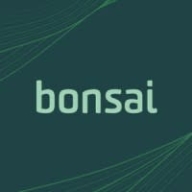

Unified Vulnerability Management and Bonsai are competing products in cybersecurity and process automation, respectively. Unified Vulnerability Management appears stronger in security capabilities, while Bonsai leads in automation features depending on user needs.
Features: Unified Vulnerability Management delivers comprehensive security assessments, patch management, and robust protection for systems. Its focus is on vulnerability detection, mitigation, and providing robust enterprise system protection. Bonsai stands out with advanced process automation, integration capabilities, and its emphasis on efficient workflow automation and scalability for operational efficiency enhancements.
Ease of Deployment and Customer Service: Unified Vulnerability Management offers a straightforward deployment process and responsive customer support tailored for users prioritizing cybersecurity defense. Bonsai provides a quick deployment with strong support and integration assistance, appealing to those focusing on efficient onboarding.
Pricing and ROI: Unified Vulnerability Management's pricing reflects its extensive features, providing substantial ROI through risk reduction and system protection. Bonsai, with cost-effective initial pricing, offers strong ROI by saving time and resources through automation, proving valuable for organizations focusing on business process automation.
The only managed Elasticsearch, OpenSearch, and SolrCloud platform that provides the support of a search engineering team, but at a fraction of the cost.
Unified Vulnerability Management streamlines the identification and management of security risks. It's designed to enhance cybersecurity efforts by providing consolidated tools and insights for managing vulnerabilities.
Unified Vulnerability Management plays a crucial role in cybersecurity by centralizing tools and processes, optimizing risk management with real-time insights, and offering customizable reporting. Its integrated approach allows organizations to address threats promptly, ensuring a proactive security posture.
What are the key features of Unified Vulnerability Management?
What benefits should users look for in Unified Vulnerability Management?
In sectors like finance and healthcare, Unified Vulnerability Management is implemented to meet compliance requirements and protect sensitive data. Its robust capability to manage complex environments supports integration into diverse organizational frameworks, ensuring tailored solutions for industry-specific challenges.
We monitor all Indexing and Search reviews to prevent fraudulent reviews and keep review quality high. We do not post reviews by company employees or direct competitors. We validate each review for authenticity via cross-reference with LinkedIn, and personal follow-up with the reviewer when necessary.